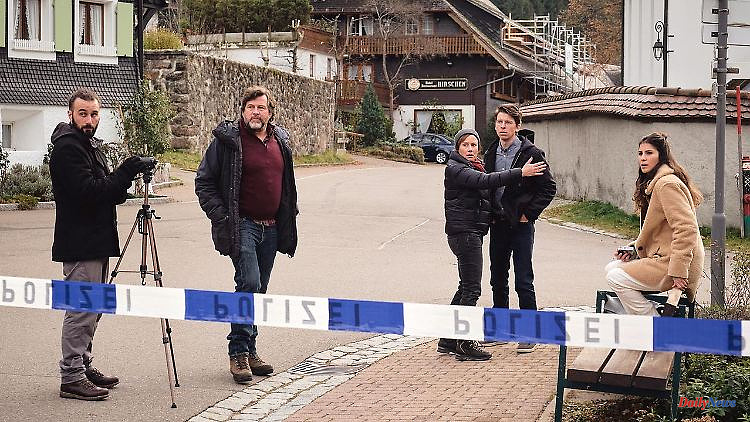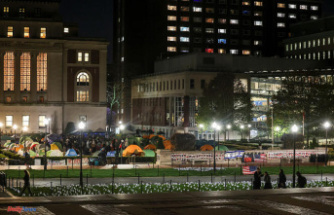In the new Black Forest "crime scene" the inspectors Berg and Tobler struggle through a valley, always suspiciously eyed by a lonely wolf. It has nothing to do with the case, but with current developments in the region.
"GW2103m" sounds like the serial number of a killer robot from a "Terminator" film. But it is the name of one of three male wolves that have been making the Black Forest unsafe for a few years. Or the pastures and meadows with the cattle grazing on them: shepherds, shepherds and farmers fear for their livelihood and demand controlled shooting. The mood in the region is so turbulent that a wolf has even made it into the current Black Forest "crime scene".
While the loner in "Down in the Valley" pays for his nocturnal raids with his life, the real Black Forest wolves can hope for offspring: Since the end of January there has also been a female wolf in the Black Forest, "GW2407f" was identified based on the signs of tears transferred genetically in an exemplary manner to seven goats that were killed in the Münster valley to the south. For the first time in 100 years, pack formation is possible again - and the debate about joy or frustration about the return of the wolf has become even more heated.
"I expect difficult and very piquant debates," said Baden-Württemberg's Prime Minister Winfried Kretschmann when asked whether shooting permits should be issued. The Green politician conceded that "animals like this could cause problems in a densely populated cultural landscape", but: "Animals tend to reproduce," in the end a compromise would have to be found between nature conservation and questions of use.
A glance at the newspapers shows that this is easier said than done: the picture has long since ceased to be black and white, and there are reasonable arguments for almost every position. Some are calling for effective livestock protection through electric fences and livestock protection dogs, others for controlled shooting and an amendment to the strict protection of species - after all, there are now 17,000 wolves all over Europe, with a growth rate of 30 percent per year in some cases.
In Baden-Württemberg, the state has so far been trying to protect herds: In the Black Forest and Odenwald, a total of 8,800 square kilometers have been designated as “promoting areas for wolf prevention”. For the shepherds, this means above all: building fences. The material costs for this are borne by the Baden-Württemberg state government. However, many herd owners, who often only work part-time as farmers, complain about the time and logistical effort that would make the undertaking difficult or impossible.
In addition, many wolves apparently learn over time to jump over protective fences or to find loopholes: streams, rocks, ditches, there is almost always a way for the wolf somewhere. Several districts in Baden-Württemberg therefore want to hunt the animal again: Keeping the landscape open to cows and sheep (grass) and goats (undergrowth) is endangered in the long term because more and more shepherds and keepers are giving up their herds due to the cracks of the wolves. Not only in the Black Forest is this a tricky situation for which there is (still) no silver bullet. However, one thing is certain: The current "crime scene" is not suitable as a model for the search for a solution.
(This article was first published on Sunday, February 12, 2023.)












